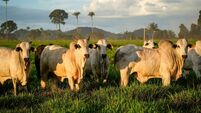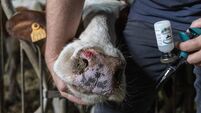Open days spread the message of wind energy
Wind farms across Ireland hosted open days last week, seeking to highlight economic, social and environmental benefits of harnessing wind power to replace unsustainable fossil fuels.
According to the Irish Wind Energy Association (IWEA), wind energy employs about 2,300 across Ireland, and will employ more than 10,700 by 2020 in meeting Irish domestic needs, with the potential for significantly more should the export framework be developed.
Wind capacity in Ireland has doubled over the last five years and now accounts for more than 17% of electricity generated, enough to power more than one million households.
By 2020, 40% of Ireland’s electricity must come from renewable sources, to achieve the compulsory EU target of 16% of Ireland’s energy consumption from renewable sources.
As well as addressing climate change, Ireland needs to reduce the security and economic risks posed by 86% (the 2010 figure) reliance on imported energy.
Onshore wind energy is seen by experts as competitive, abundant and the least costly large scale renewable source of electricity for Ireland.
Caitríona Diviney, chief operating officer, Irish Wind Energy Association, says wind energy is acknowledged across the world as a clean, safe, effective and economically sound source of electricity and wind power that enjoys widespread public support in Ireland (80% support, March 2013).
*Global Wind Day 2013 was last week. How many wind farms in Ireland hosted open days, and where? Were they well attended?
>>Fourteen wind farms across the country hosted events this year. Whilst we don’t have definite numbers yet, the events were attended by members of the public as well as schoolchildren — including invited teenagers from inner city Dublin, most of whom had never seen wind turbines.
Apart from ‘walk and talk’ tours, a number of free ‘KidWind’ courses for teachers were held on the day, aimed at educating the educators on wind energy.
Additionally, IWEA ran information meetings in conjunction with employers, for those engaged in technical trades, presenting opportunities for entering the sector.
*Were there any protests by people who don’t accept wind technology as a semi-permanent feature in the Irish landscape?
>>There were no protests at any of the events held. Global Wind Day, which continues to be a great success, has been happening across the globe for a number of years and is a day of celebration and discovery for local communities.
*What are the main objections, and what is the wind sector’s response?
>>Where people do raise questions and concerns with us, such as the visual amenity of wind turbines, but also a range of issues including noise levels and alleged health impact of wind farms, more often than not, these concerns are rooted in inaccurate information and spurious arguments by opponents of wind power and a general lack of knowledge and understanding of wind farms.
This is why we encourage people who want to educate themselves and learn more about wind power to rely on internationally recognised and reputable sources for their information, and of course, go and see wind farms in operation first hand when they have an opportunity to do so. At IWEA, we provide considerable information about wind power and answers to any questions people may have, and we would encourage people who have questions to get in touch with us or visit our www.iwea.com website.
*Is community wind the way forward? Should wind energy schemes be owned in part or entirety by the local community?
>> IWEA’s primary role and purpose is to promote use of wind power as a clean, safe and sustainable energy source that can help reduce our dependence on environmentally harmful and unsustainable fossil fuels.
In theory, this can be achieved through a range of different ownership models, and there are examples of community projects, such as the Templederry project in Co Tipperary which offers guidance for those seeking to develop community projects of this kind.
However, to date, community ownership has not been a typical wind energy development business model, and is relatively rare in Ireland and the UK.
One of the main challenges to community ownership is the generation of funds required to contribute to the cost of ownership. Additionally, a well-organised and focussed community group built upon strong public and institutional support is required to drive a project.
We have acknowledged and promoted the need for energy companies to engage closely with local communities as they seek to bring new projects on stream across the country, to ensure we maintain the widespread public support wind energy continues to enjoy in Ireland.
IWEA recently published its “Best Practice Principles in Community Engagement & Community Commitment” which sets out a number of clear guidelines that IWEA members involved in wind development are encouraged to follow in engaging with local communities and promoting wind power. The aim of these guidelines is to bring about closer co-operation between energy companies and local communities throughout the life span of individual energy projects.
Through measures such as this, we continue to shift towards a more inclusive process, benefiting all those concerned. Local communities are fully entitled to enjoy the benefits of renewable energy developments and are invited to engage with companies throughout the planning phase and on into the future.









